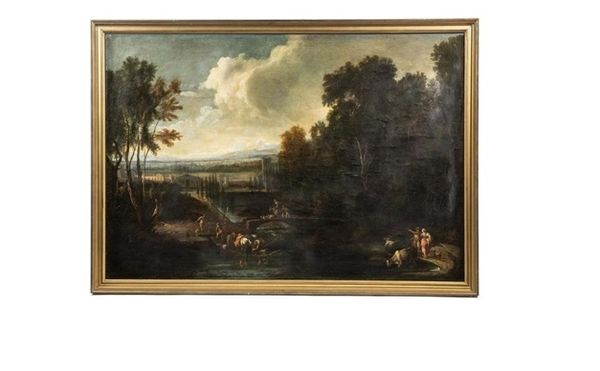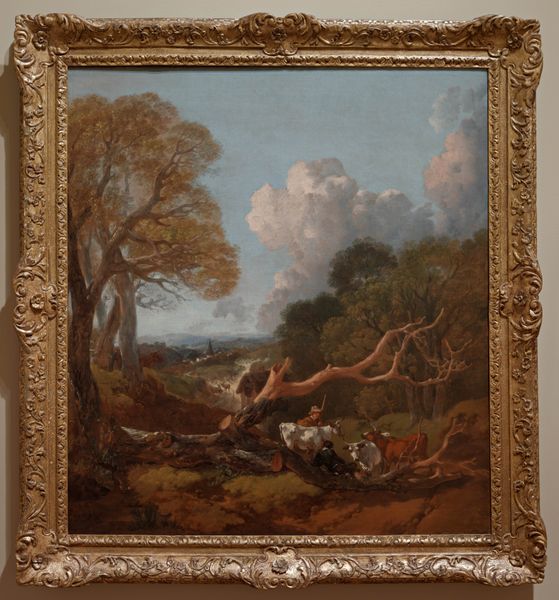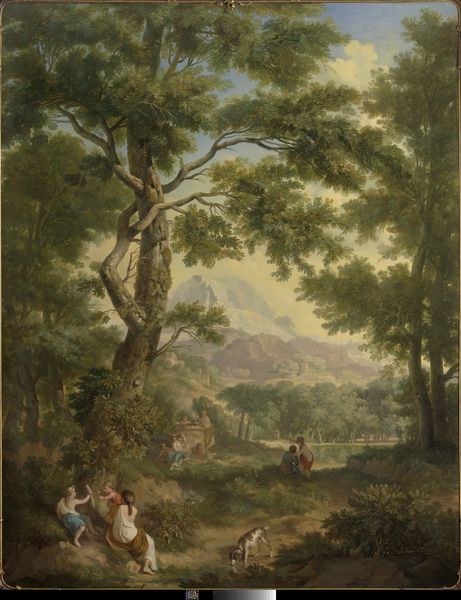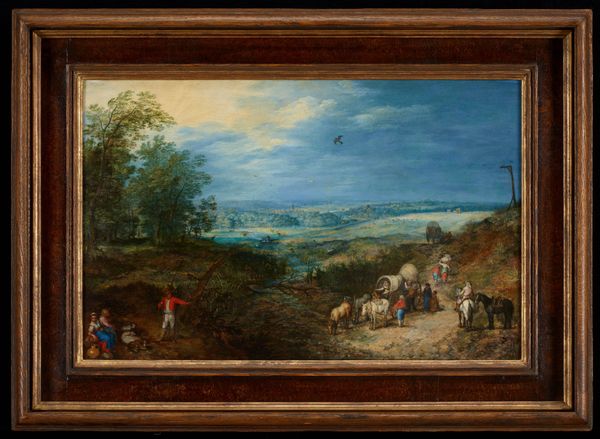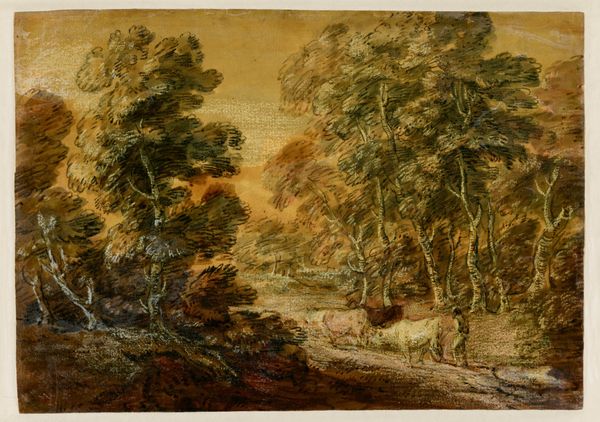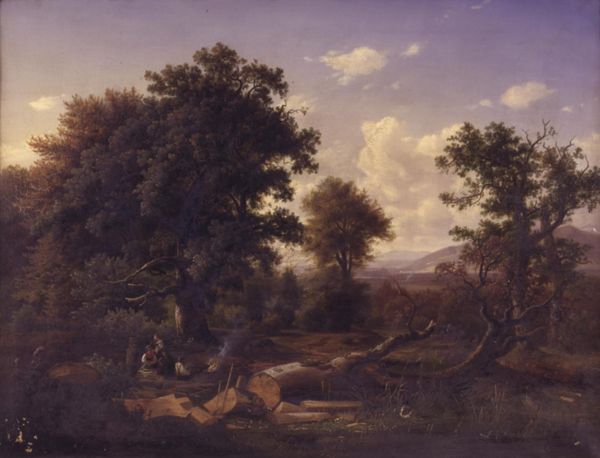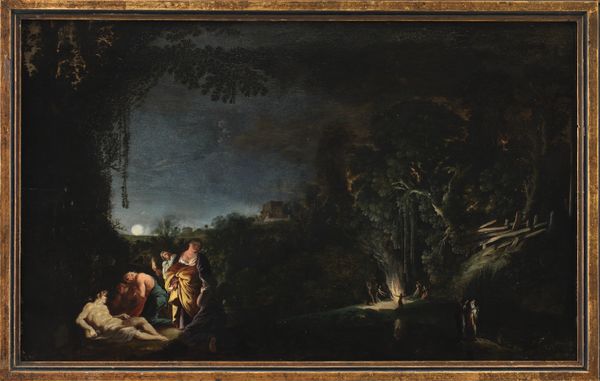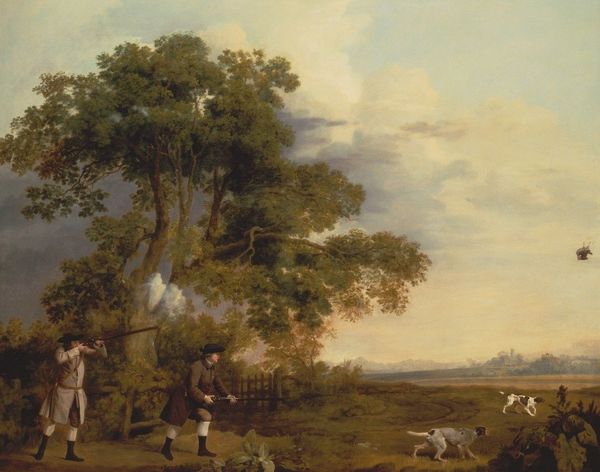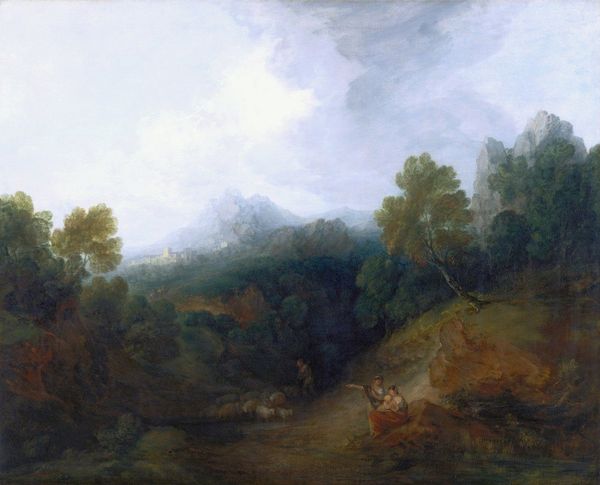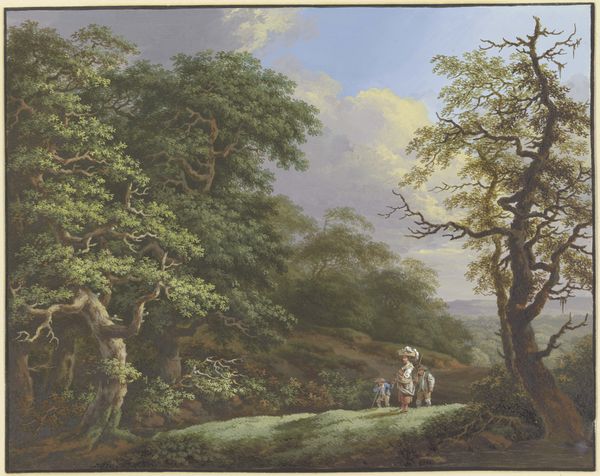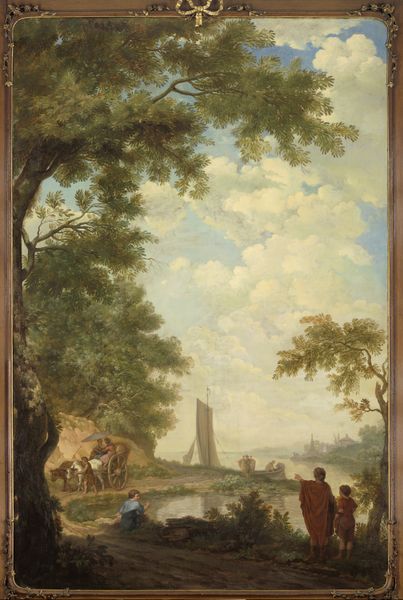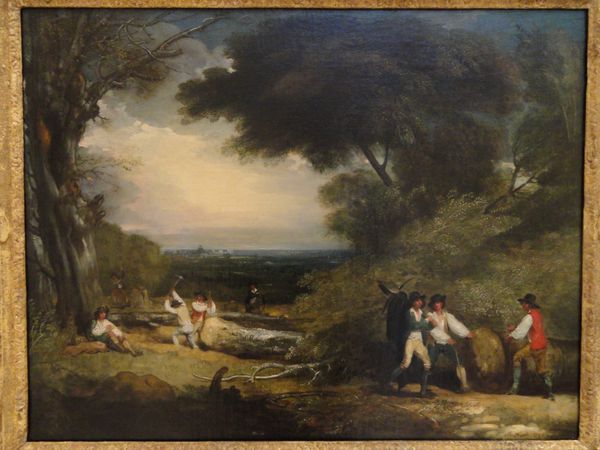
painting, oil-paint
#
allegory
#
baroque
#
painting
#
oil-paint
#
landscape
#
oil painting
#
history-painting
#
academic-art
Dimensions: 110 x 130 cm
Copyright: Public domain
Editor: So, we're looking at "Diana and Actaeon," an oil painting, and the artist is Claude Lorrain. Immediately, the light just pulls me in – it's so warm and golden. The scene itself feels peaceful, but there's also something dramatic happening with the figures... How do you interpret this work? Curator: For me, this painting operates on a few symbolic levels. Consider how water, a recurring motif in Lorrain's work, serves as a space for both purification and vulnerability. In this image, it highlights the sacred space of Diana and her nymphs. Now, juxtapose that with Actaeon, the intruder – how does that disruption play with themes of transgression and fate, especially in relation to landscape as a container for collective memory? Editor: That’s a really interesting way of putting it. So, the landscape almost *holds* the weight of that cultural story? Curator: Precisely. It’s not merely a backdrop. Think about the positioning of the figures, Diana and Actaeon. How does Lorrain visually emphasize their respective roles within the ancient myth? The act of viewing itself becomes fraught with peril, doesn't it? Editor: Absolutely! The composition directs our eyes right to that moment of discovery, which then leads to Actaeon's transformation... It's like Lorrain is reminding us of the power of symbols to transcend time and hold complex ideas. Curator: Indeed. We see the influence of this idea echoed through history, which confirms that symbols provide meaning. What have you noticed exploring this piece? Editor: It made me think about how even seemingly idyllic landscapes can be imbued with potent narratives and that the story is not just something that happened, but something remembered and re-enacted through art. Curator: Precisely. These stories and their visual representations shape how we perceive ourselves and the world around us.
Comments
No comments
Be the first to comment and join the conversation on the ultimate creative platform.
